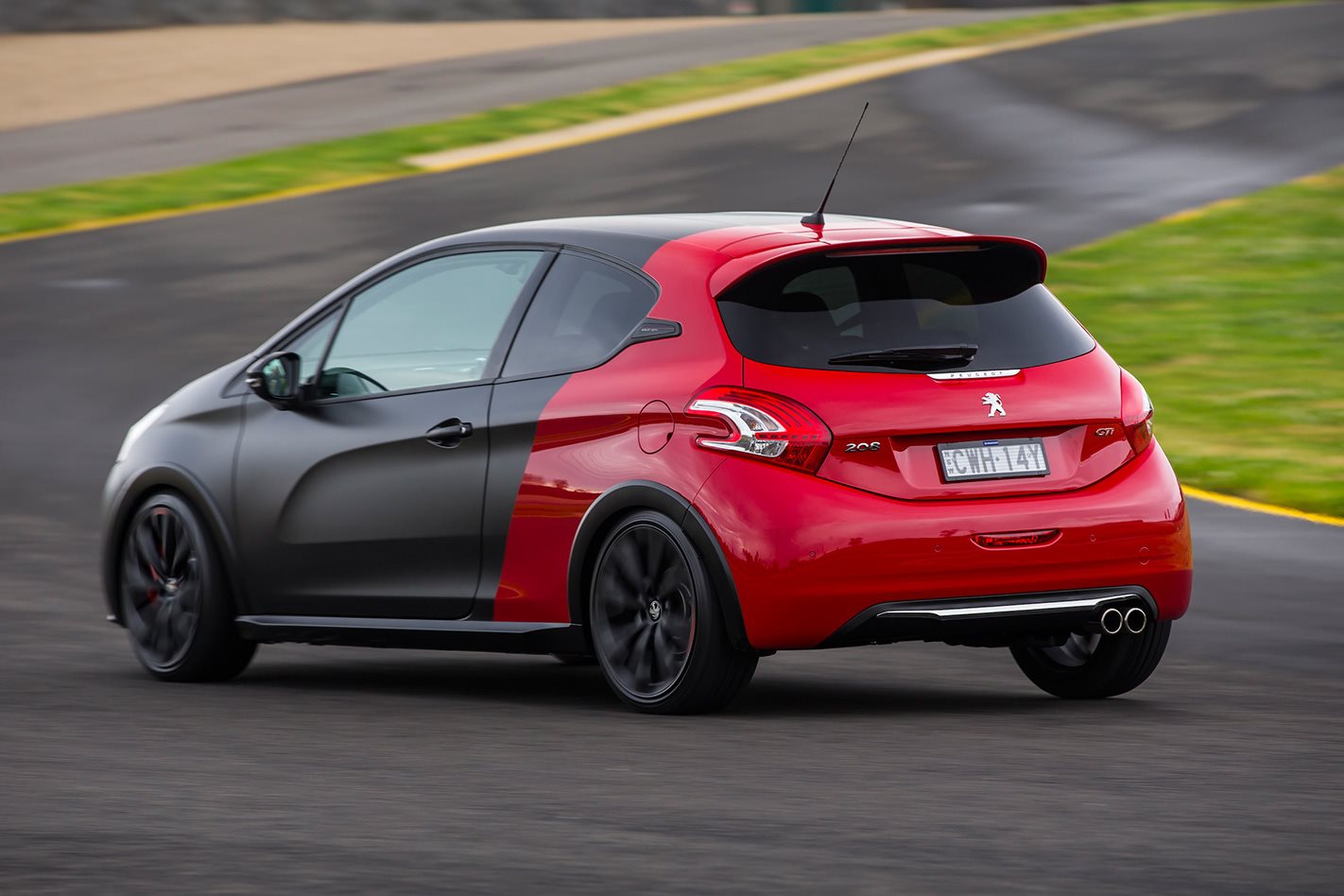Five years ago Peugeot Sport were nowhere. Now its latest models are asleep in a different way – the 208 GTi 30th Anniversary and 308 GTi are in the pits having been punted around Sydney Motorsport Park all day.
This is the first Australian outing for the 308 GTi ahead of its official launch in February 2016. Although the $44,990 308 GTi 250 will land then, a small shipment of $49,990 308 GTi 270 – denoting the horsepower difference – docked early. Peugeot clearly couldn’t keep the excitement to itself.
With the $35,990 208 GTi 30th Anniversary not quite sold out and the $29,990 208 GTi just updated with identical 153kW/300Nm outputs, the brand brought the trio to the track formerly known as Eastern Creek.
Logically we start with entrée before main and dessert, so 208 GTi is tracked first, then 208 GTi 30th Anniversary, then 308 GTi.
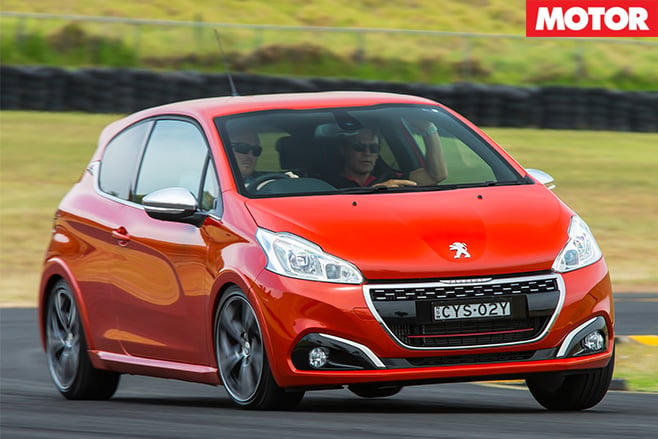
Same corner, same gear, this time in 208 GTi 30th Anniversary.
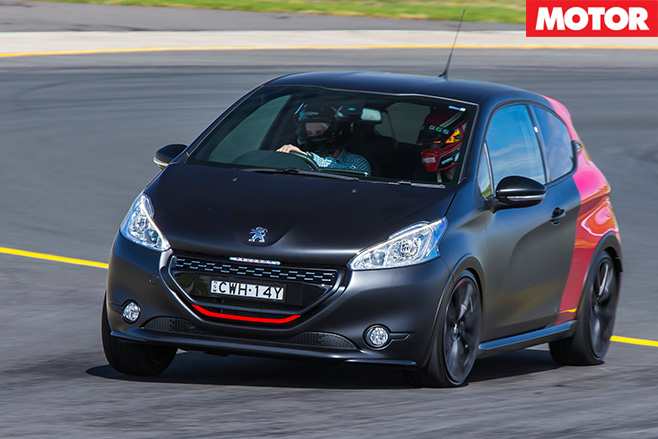
The 30th darts, rather than bobs, into the bend. Its extra grip and flatter stance encourages extra steering lock as much as the LSD tempts extra throttle earlier. Despite the same outputs, the 30th powers away in third. In some parts of this track the 30th can feel nimble and fast, however its stiff suspension and short wheelbase means it can also move from feeling darty to snappy.
No problem for the 308 GTi, which feels speedier and more sophisticated than its slightly delinquent sibling.
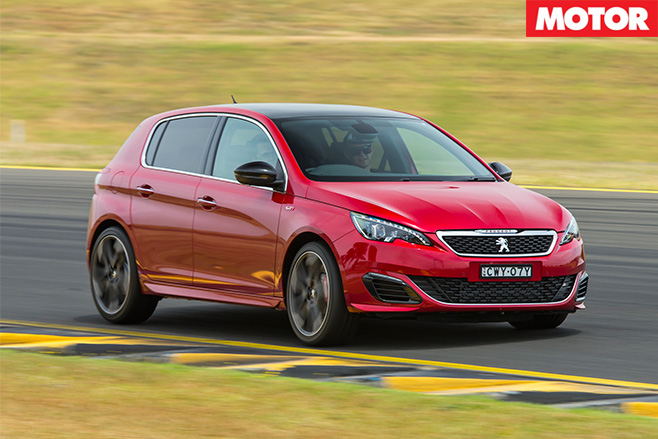
The 308 GTi looks squat on the outside and that’s how it feels on the track. There is greater stability everywhere, whether changing direction quickly or keeping the throttle pinned in sweepers. The optional 235mm-wide 19-inch Michelin Pilot Super Sport tyres clearly help (225mm 18s are standard). Possibly, big brother is less playful than little brother.
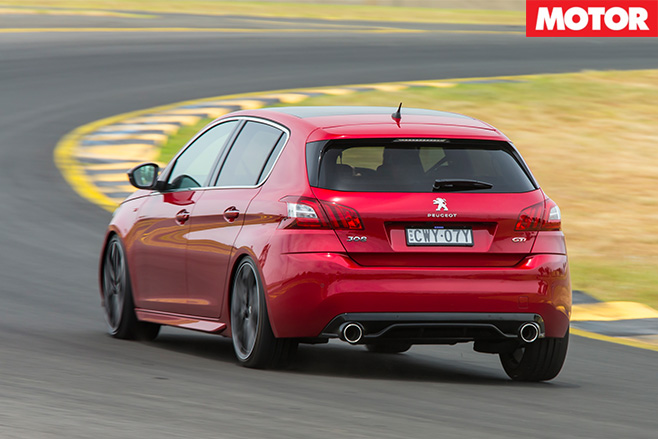
Similarities between the Peugeots? They’re six-speed manual-only, though the shifters are rubbery and long-throw. Steering is via nuggety little rims, with nice mid-weighting but without feedback. Every exhaust system should be louder.
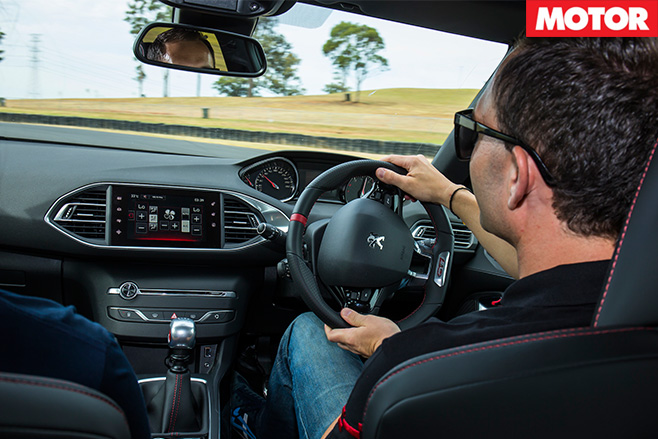
In summary, the 208 GTi is sweet but not serious enough as a proper hot-hatch. The 208 GTi 30th Anniversary is more fun and feral, and we’re told its parts may soon be available in the regular model.
However, it’s the blend of styling and cabin sophistication with a gun engine and Michelins/LSD-induced cornering excellence found in the 308 GTi 270 that means a comparison with the Golf GTI Performance can’t come soon enough. Next year it will have to be.

